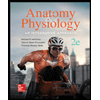A theoretical operon (theo) in E. coli contains several structural genes encoding enzymes that are involved sequentially in the biosynthesis of an amino acid. Unlike the lac operon, in which the repressor gene is separate from the operon, the gene encoding the regulator molecule is contained within the theo operon. When the end product (the amino acid) is present, it combines with the regulator molecule, and this complex binds to the operator, repressing the operon. In the absence of the amino acid, the regulatory molecule fails to bind to the operator, and transcription proceeds. Characterize this operon, then consider the following mutations, as well as the situation in which the wild-type gene is present along with the mutantgene in partially diploid cells (F¿):(a) Mutation in the operator region.(b) Mutation in the promoter region.(c) Mutation in the regulator gene.In each case, will the operon be active or inactive in transcription, assuming that the mutation affects the regulation of the theo operon? Compare each response with the equivalent situation of the lac operon.
A theoretical operon (theo) in E. coli contains several structural genes encoding enzymes that are involved sequentially in the biosynthesis of an amino acid. Unlike the lac operon, in which the repressor gene is separate from the operon, the gene encoding the regulator molecule is contained within the theo operon. When the end product (the amino acid) is present, it combines with the regulator molecule, and this complex binds to the operator, repressing the operon. In the absence of the amino acid, the regulatory molecule fails to bind to the operator, and transcription proceeds. Characterize this operon, then consider the following mutations, as well as the situation in which the wild-type gene is present along with the mutantgene in partially diploid cells (F¿):
(a) Mutation in the operator region.
(b) Mutation in the promoter region.
(c) Mutation in the regulator gene.
In each case, will the operon be active or inactive in transcription, assuming that the mutation affects the regulation of the theo operon? Compare each response with the equivalent situation of the lac operon.
Trending now
This is a popular solution!
Step by step
Solved in 2 steps








